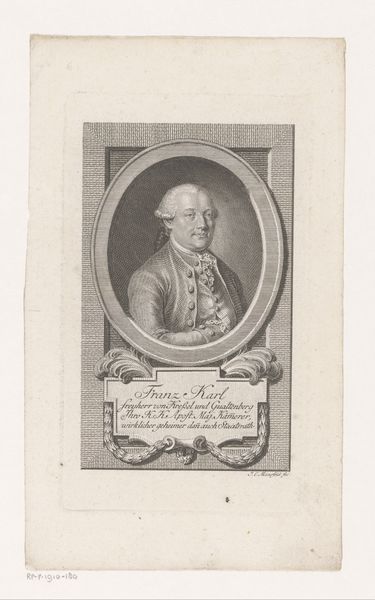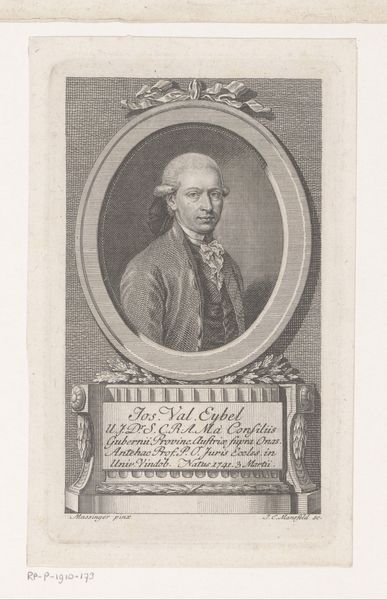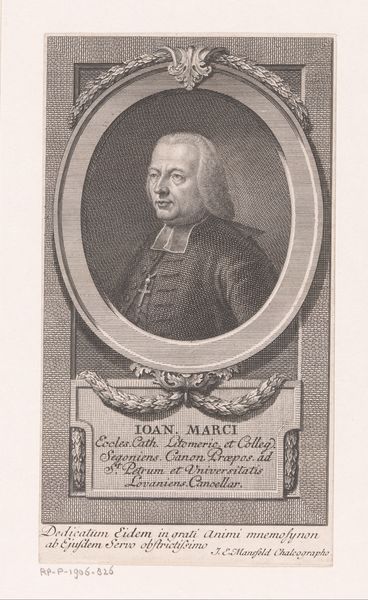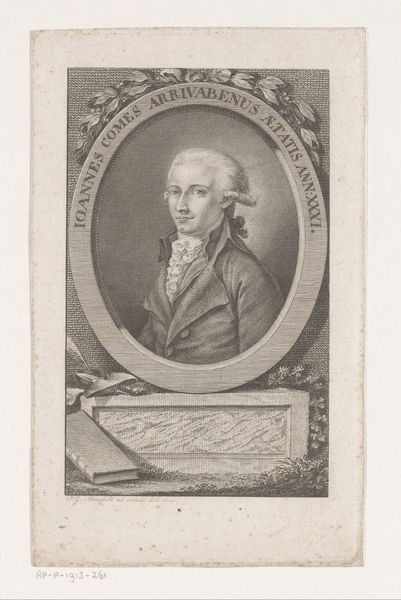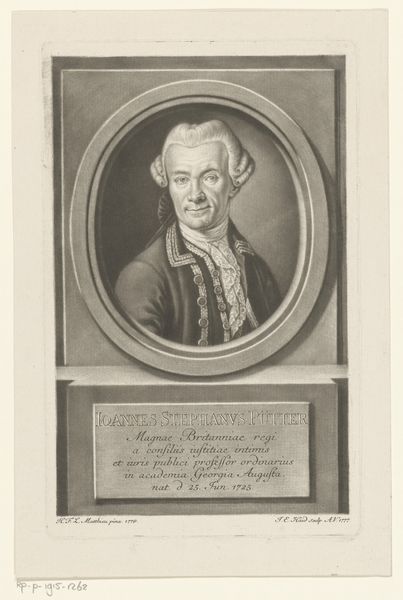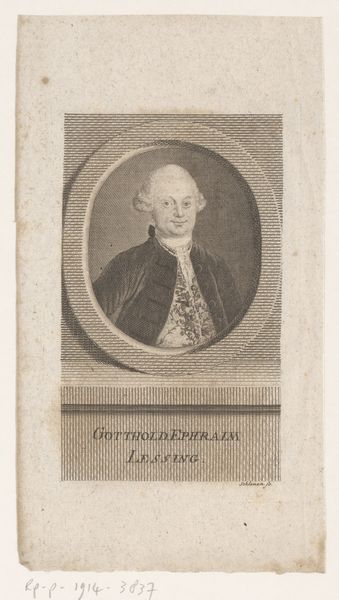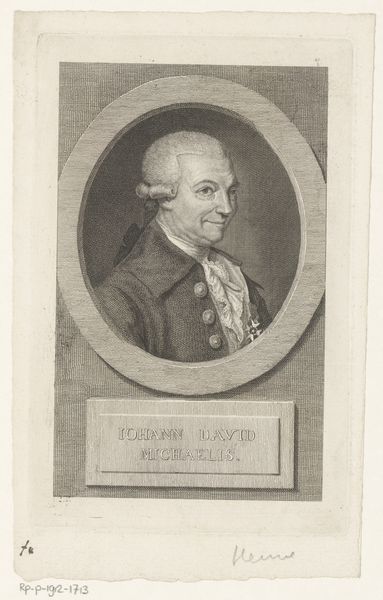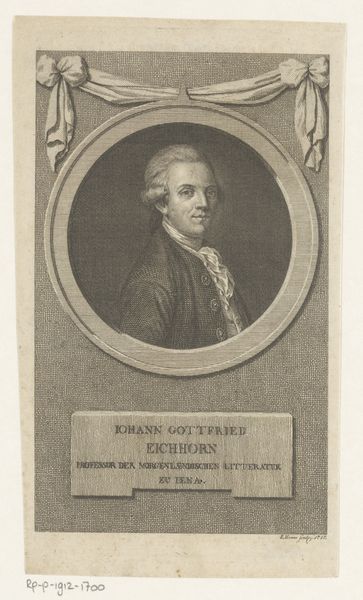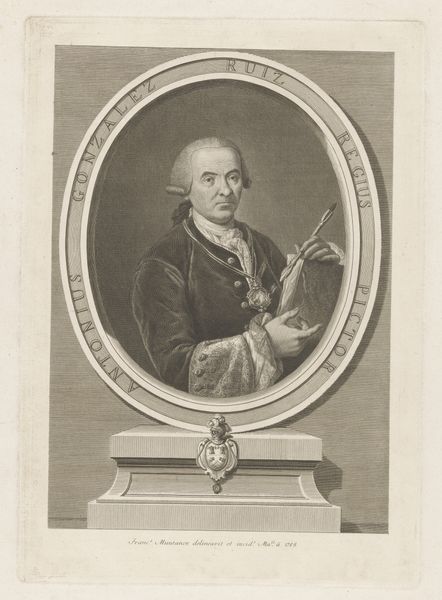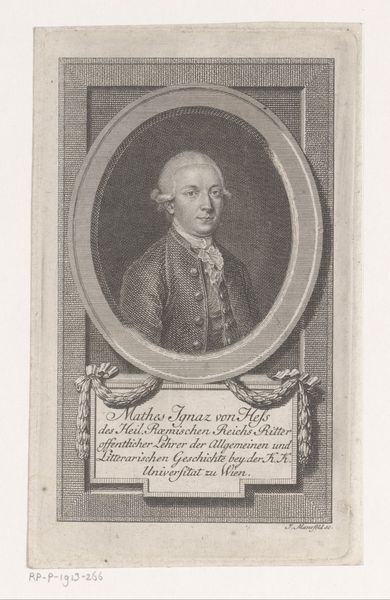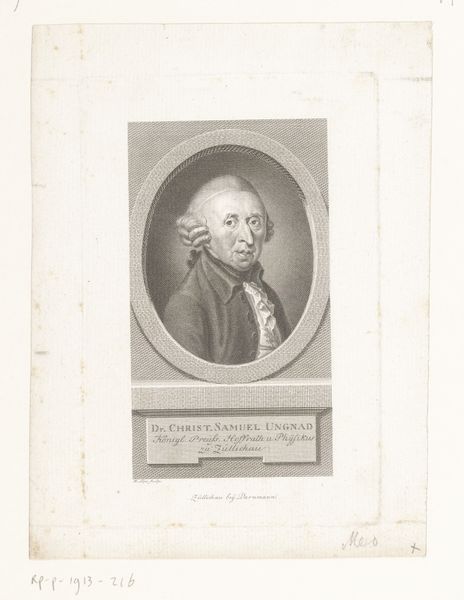
Dimensions: height 168 mm, width 105 mm
Copyright: Rijks Museum: Open Domain
Curator: Here we have Johann Ernst Mansfeld's "Portret van Josef Ferdinand von Holger," likely crafted between 1774 and 1796. It’s an engraving, showcasing the subject within a bordered oval frame above inscribed text. What strikes you immediately? Editor: Austere! Impeccably rigid. It’s all about line and formal composure; every hatched stroke serves the structure. Makes me feel like I’m at a particularly serious academic gathering where wit goes to die. Curator: The formality stems from its commitment to Baroque portraiture, though adapted into the precise language of engraving. Notice how Mansfeld uses hatching and cross-hatching not just to create shadow, but also to model form meticulously, especially in the face. Editor: Oh, absolutely. The face is a masterclass in understated character. I’m strangely drawn to the wig. It's trying too hard, as wigs tend to do, but the precision! I appreciate the wig’s desperate bid for power within this tightly controlled world. Curator: And below the portrait itself, the inscribed text lends further authority. The composition balances portrait and text to broadcast Holger’s status. It functions almost like a printed monument. Editor: True. The lettering is gorgeous; feels inevitable, almost. Everything about this print screams, "Proper Order!" But within that, I see a little rebellion. The eyes have this knowing glint—almost mischievous, beneath the wig and officialdom. Curator: An intriguing observation. Could that suggested flicker of individual personality within a formalized structure actually represent the dawn of pre-romantic sentiment, chafing against the strictures of the Baroque era? Editor: Precisely. Maybe Josef Ferdinand, in his heart of hearts, wanted to let loose, wear a more flamboyant waistcoat. This portrait becomes this hilarious, sad little power struggle between conformity and inner zest! Curator: Your reading certainly provides a compelling narrative. It pushes us to think about portraits not only as records of appearance, but as reflections of shifting social and intellectual currents. Editor: Well, art should make us ponder life, wigs, and all! Curator: Indeed. It invites speculation on how social expectations sculpted the man in the frame and beyond.
Comments
No comments
Be the first to comment and join the conversation on the ultimate creative platform.
